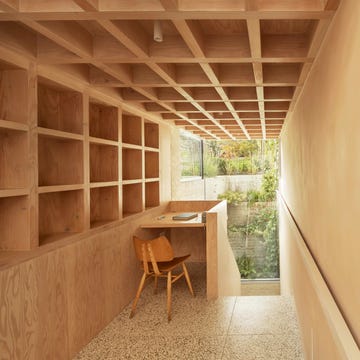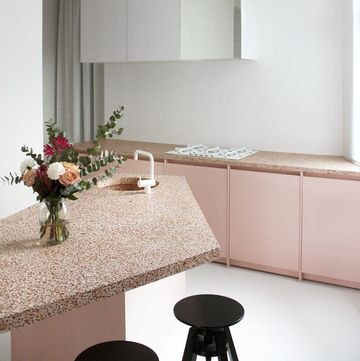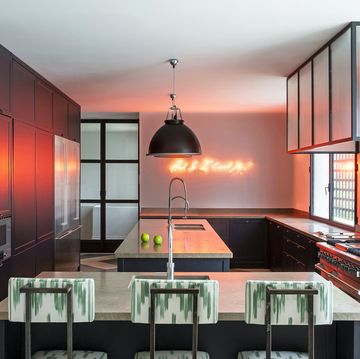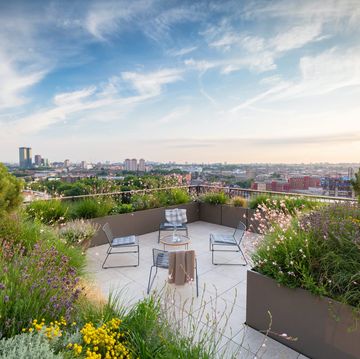Seamlessly blending influences from his South African roots with classic British style, Southwark-based designer Christian Bense is a talent to watch. His route into the industry was refreshingly unconventional.
Coming from ‘quite humble beginnings’ (his father was a builder and his mother a photographer), Bense considered becoming a surgeon or a psychologist. He began a degree in business management, but switched to a design course at Inscape in Pretoria. His diverse interests are an asset.
‘I bring an intellect to my interiors – it allows me to connect to clients who may not be creative,’ he explains. ‘My love for interiors stems less from being surrounded by nice things at a young age than from an ability to rationalise one’s surroundings to make the best version of them.’
What's everyone reading?
Having set up his studio in 2020, Bense has assembled a team with similarly offbeat identities – members of staff have backgrounds in real estate, set design and floristry.
What’s his style?
There’s a calm feel to Bense’s interiors, which stems from his preference for pale, understated backdrops, with pops of colour and texture layered on top. ‘I tend to work with walls that are light but never white, allowing even the subtlest contrasts to feel punchy,’ he says.
Bense enjoys the fact his style is not easily labelled. ‘I like it when people describe my work with a string of random words and add “ish” or “kinda vibe” at the end,’ he says. His inspirations are varied – the clean-cut style of New York designer Robert Stilin, the colourful comfort of London decorator Beata Heuman, and the interiors of his native South Africa, which you’ll spot in his love of abstract-patterned textiles and warm, earthy neutrals.
What are his recent projects?
An apartment in a listed building in Holland Park, where he had to be ‘very considerate’ of the architecture. Describing it as ‘very me’, Bense says the project helped him to work out ‘what comes naturally’ to him as a designer. He also worked on a Grade II-listed home in Knightsbridge, which he calls ‘pared-back period’. ‘It’s sympathetic to the original building, bringing it back into line with its historical intentions,’ he says.
How has he achieved that in a modern way? ‘It feels organic, not overdesigned, and was created with the client, allowing her a sense of ownership regarding the decisions we made,’ Bense explains. ‘My projects don’t have a signature style, but they do have a sense of effortless curation – a layered look that’s never contrived or forced.’
What is he working on next? Although Bense’s portfolio has thus far been dominated by family homes, he says he’s not yet had much experience of designing spaces with children in mind – something that’s set to change over the next year. ‘The majority of my projects for 2023 include young children,’ he says. ‘I often talk about creating homes that combine a strong aesthetic with practical living, so that sentiment is going to be tested.’
He says ‘I want to create homes that are classic, sophisticated and will outlast a trend, but, first and foremost ,are rational, appropriate and thoughtful.’ christianbense.com
How to create a stylish home that transcends passing trends
Christian Bense reveals his tips for making sure your interior is a true original
Design and buy with the following in mind: something masculine, something feminine and something vintage. This forces you to look deeper at what each piece is there to achieve, whether in terms of looks or energy. Vintage items add a hint of humility and make spaces more inviting.
Pay attention to the architecture, and always ensure that you are linking the four walls of any room. The decorative elements should come after. For example, you can highlight architectural details with a harmonious choice of fabric, or match the tone of wooden joinery with the piping on cushions. Hard elements and soft ones should always be in dialogue.
Begin by investing in one key item of furniture per room, chosen simply because you like it. I did this for my apartment, which I started from a blank slate. Each piece became the linchpin of a room, informing the rest of my design choices.
Make sure that your ‘hero’ pieces in each room are bought from different places; don’t buy your sofa from the same store that you got your bed. Approaching your home this way makes you try a little harder, and prevents a brand’s ‘house style’ from permeating your entire design.

















